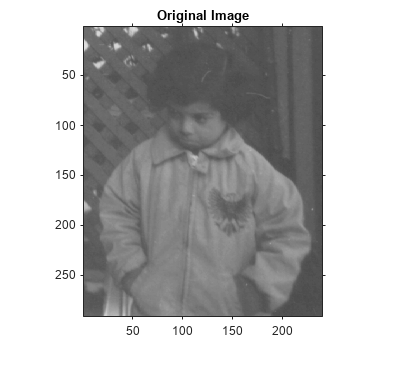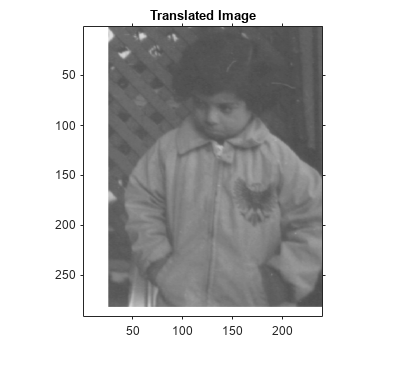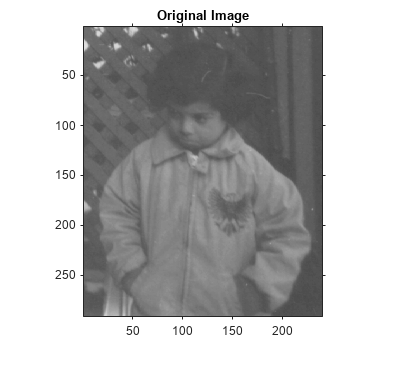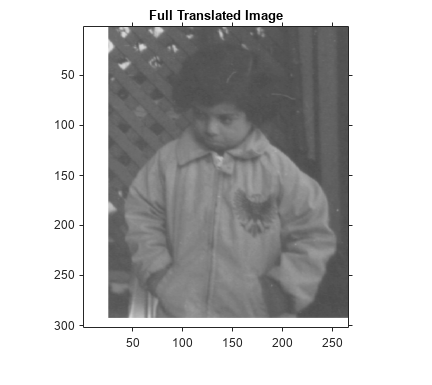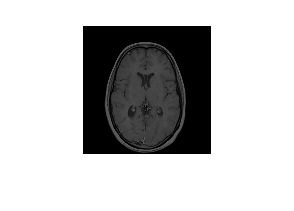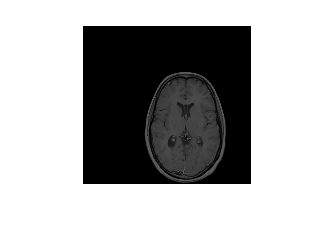imtranslate
Translate image
Syntax
Description
B = imtranslate(A,translation)A by the 2-D or 3-D translation vector specified in
translation.
If A has more than two dimensions and
translation is a 2-element vector, then
imtranslate applies the 2-D translation to each plane of
A.
[
translates the spatially referenced image B,RB] =
imtranslate(A,RA,translation)A with its associated spatial
referencing object RA. The translation vector,
translation, is in the world coordinate system. The function returns
the translated spatially referenced image B, with its associated
spatial referencing object, RB.
___ = imtranslate(___,
translates the input image using name-value arguments to control various aspects of the
translation.Name=Value)
Examples
Input Arguments
Name-Value Arguments
Output Arguments
Tips
imtranslateis optimized for integer valuedtranslationvectors.When
OutputViewis"full"andtranslationis a fractional number of pixels, thenimtranslateexpands the world limits of the output spatial referencing object to the nearest full pixel increment.imtranslatedoes this so that it contains both the original and translated images at the same resolution as the input image. The additional image extent in each is added on one side of the image, in the direction that the translation vector points. For example, whentranslationis fractional and positive in both X and Y, thenimtranslateexpands the maximum ofXWorldLimitsandYWorldLimitsto enclose the"full"bounding rectangle at the resolution of the input image.
